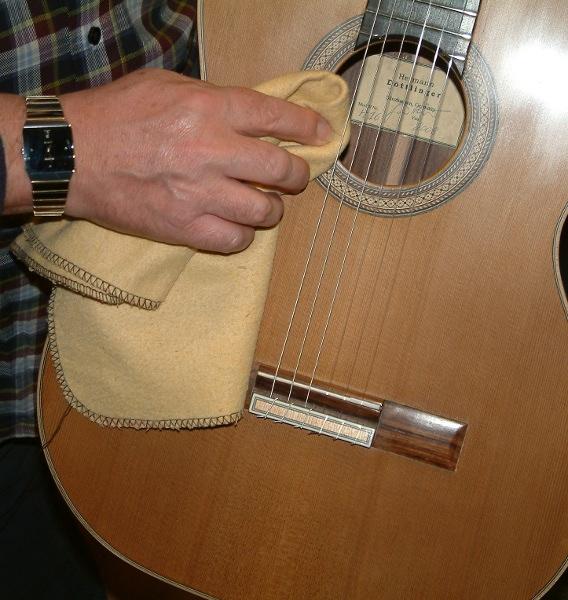Humidity
Wood is a natural resource and its water content can change by the admission and submission of moisture.
Wood expands due to environmental humidity, and contracts by dryness of air. 
In our latitude problems often arise due to the changes between summer and winter.
Since heating in winter does reduce the relative humidity below 30%, wood dries out and this can result in dry cracks at the instrument.
IIn contrast a humid weather in summer can increase the air humidity up to 70% to 80%. Thus wood absorbs humidity and as a result it expands. If then an instrument is exposed to intensive sunrays, glued joints can disperse – increased by the tension of the strings it is most likely that the guitar bridge lifts. At the worst the bridge breaks open with a loud noise.
In my workshop all guitars are built in a relative air humidity of about 45%. This corresponds with the annual average. Using this controlled method an instrument can compensate moderate changes in both directions.
In winter the shrinking of the wood is most likely when the flat bars on both sides of the fingerboard are noticeable. Likewise the neck relief can result in a changed position of the strings. At the worst this can result in dry cracks on the top, the back and even the frame. Guitars that are exposed over a longer period to drought, could encounter irreversible damages.
Please ensure adequate air humidity from the start – a hydrometer can provide a valuable service. In dry periods professional air humidifier can be used, they are also available as guitar suitcase humidifier.
Cleaning
Your instrument ought to be cleaned on a regular basis.

Needless to say, that the instrument has to be dried with a soft cloth immediately after cleaning. Visible stains and marks can be removed with a little bit of salvia.
Special varnish cleaner should be used with much caution. Before applying the varnish cleaner, it is better to test it beforehand on a small area that is not visible. Much caution is recommended here – there are no guarantees.
Pay much attention to guitars with a shellac polishing. Alcohol-based cleaner are unsuitable for shellac – thus the varnish can dissolve. Please don’t use polish that contents wax or resin.
Special fingerboard cleansing products are available, but pure alcohol or spirit can do the same job. Please mind not coming in contact with the shellac polish.
Bass strings are often jointly covered/braided with new silver. Over time they become soiled and lose their sound by perspiration, grease, dust and oxidation. I recommend changing the strings regularly. Hence, a cleansing is not required.
In the case of purchasing a guitar, seek advice on how to clean your guitar and always as what kind of coating has been applied on the guitar.




